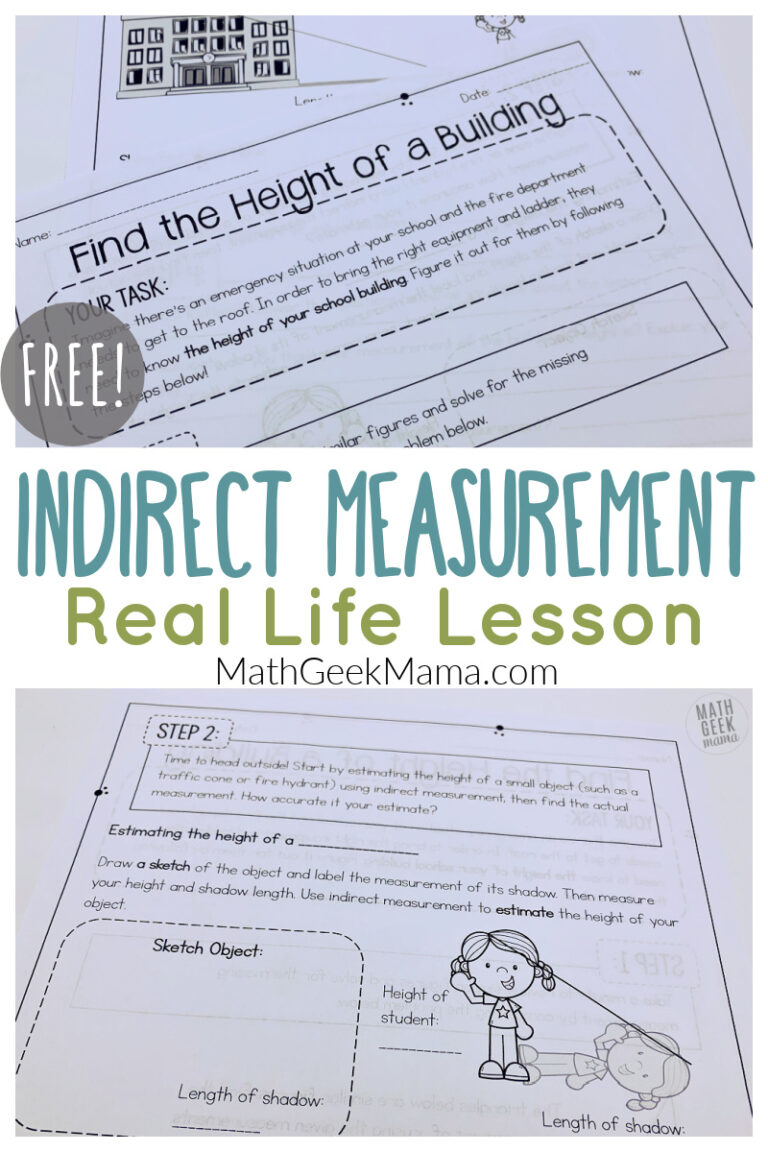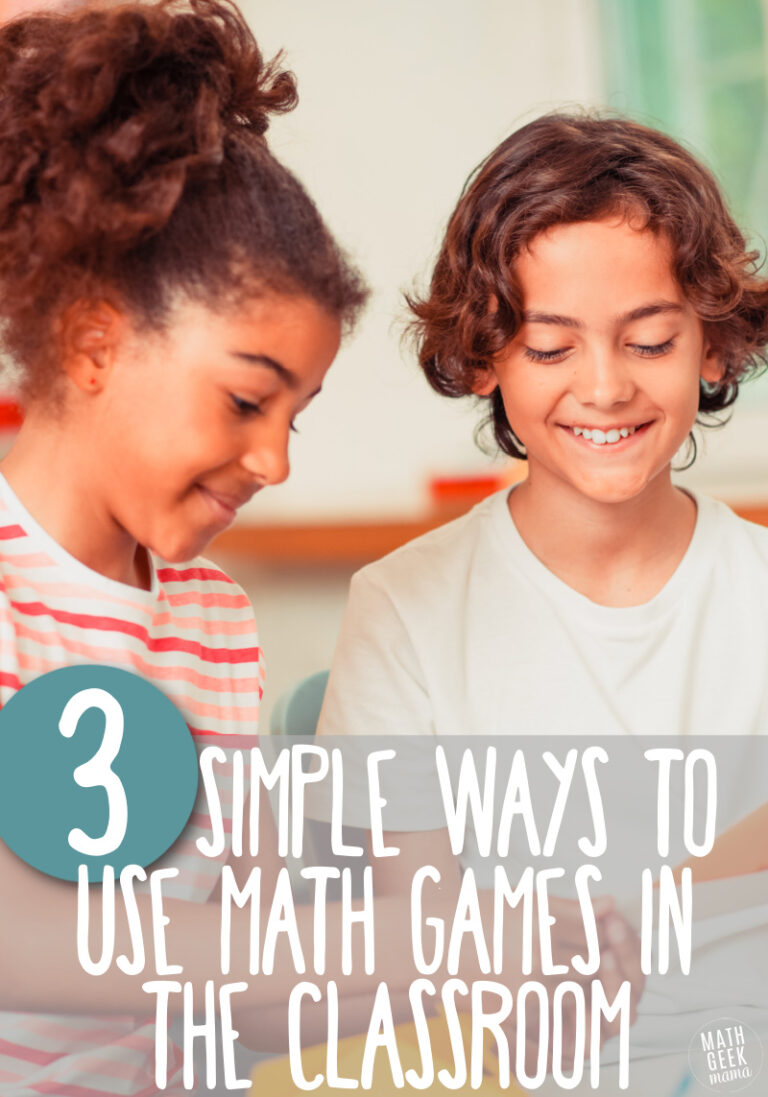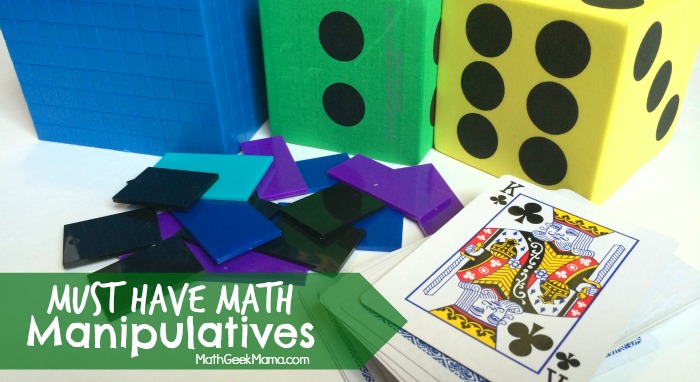The Beginner’s Guide to Hands-On Math
Do you ever feel like teaching math is a struggle or just plain boring? Are you sick of worksheets and textbooks? Teaching and exploring math in a hands-on way will not only be more engaging for your kids, but it will deepen and strengthen their conceptual understanding. But if the thought of making math “hands-on” is intimidating to you, never fear! This beginner’s guide to hands-on math will walk you through it, expand your understanding of “hands-on,” and boost your confidence.

*Please Note: This post contains affiliate links which help support the work of this site. Read our full disclosure here.*
How Hands-On Math Deepens Understanding
Brain research has proven that engaging multiple senses when learning will boost learning and retention.
So when you’re able to combine a visual or hands-on element with a particular math concept, you’re helping kids to make connections and better store the information in their brain.
In addition, when kids see a math problem on paper, build it and touch it with their hands, and then solve it, they’ll understand it more deeply because they can “see it.” It’s not just numbers on a page, it’s a drawing or tangible object in front of them. It makes the scary, abstract math concept concrete. A critical first step for young mathematicians.
In addition, looking at a problem in a visual or hands-on way will also help them to understand more deeply because they’ll start to see and discover patterns that they wouldn’t have noticed before. Math is known as the “science of patterns,” so facilitating instruction to enable students to see patterns is essential.
It may also help them to learn and retain more by the simple fact that they’re more engaged. Trying to convince some kids to engage with a worksheet just won’t happen. And if they’re not engaged, they’re not learning. They’re just spectators.
So by finding a fun way to get kids engaged, you’re already on the right track to deepening their mathematical understanding.
Hands-On Math Essentials: The Tools of the Trade
Before diving into specific ideas for meaningful, hands-on math instruction, I want to share what I consider the necessary tools. Hopefully this list is not as long and daunting as you may have imagined. I really believe that not a lot of fancy gadgets are necessary for math exploration and success.
A Hundred’s Chart:
You can buy nice, large, laminated ones like these, or you can simply print a blank copy from the internet. You can use a hundreds chart millions of different ways for a visual, hands-on math experience.
See this list of math ideas with a hundreds chart.
Base Ten Blocks:
I have this set, and I use it every week in our math lessons. It’s a great, visual model for large numbers and place value. I might use them to explore addition and subtraction problems with my Kindergartner. Or you can use them to introduce and explore decimal concepts.
These are sturdy and survive the use of multiple kids over multiple years. You can fairly easily, however, create your own with some pipe cleaners and beads if you’d rather (You just won’t have hundreds and thousands).
Sticky Notes of Various Sizes:
Yes, I think a wide assortment of sticky notes is essential. I also use these nearly every week to model place value, and composing and decomposing numbers.
Read more about learning math with sticky notes here.
Objects to Count:
This can be literally anything. In the early years, when you’re working on counting, cardinality, on-to-one correspondence and number recognition, you can easily work on skills with objects from around your house. My personal favorite is candy. Grab an entire hands-on unit on learning math with Skittles candy here.
Plus, see this huge list of ideas for counting objects.
Pattern Blocks:
While some people may argue that pattern blocks are not essential, I disagree. In the early years, they offer fantastic opportunities for free play and exploration, and as kids get older, use them in more formal ways to learn basics of Geometry, fractions and more.
Ideas for Learning Math with Pattern Blocks:
- Design Cinderella’s Castle with Pattern Blocks
- Teach Subtracting Mixed Numbers with Pattern Blocks
- Pattern Block Logic Puzzles for Kids
Geometiles:
A great, hands-on alternative to pattern blocks is a set of Geometiles. These inter-locking shape tiles can again, offer fun free play with shapes and math ideas, but can also be used in teaching specific concepts.
The great thing about Geometiles is that they have an entire collection of hands-on math lessons to go along with them free on their website. So you don’t have to come up with lesson ideas on your own, you can simply print and begin.
See our hands-on tangram lesson with Geometiles here.
Fraction Manipulatives:
There are lots of hands-on ways to model fractions. I like these fraction tiles (I believe rectangular tiles are more effective than circles). But you can also use anything that can be divided into equal parts. Food works well. You can also find printable options with a quick Pinterest or google search.
Or teach all sorts of fraction concepts with rulers and paper folding. Simple, hands on math fun!
Planning Hands-On Math Lessons
There are several ways you can approach this. It will depend partly on the age of your kids, and partly on what you’re trying to teach. Here are some guidelines to get you started:
Open-ended Free Play
Providing time for your kids to just play and explore is especially important in the early years. There’s no need for a preschooler or Kindergartner to sit at a desk everyday and complete math calculations. Instead, allow time to play and explore.
Give them a set of pattern blocks or Geometiles and see what they can create. Then ask questions about it, such as, “How many triangles did you use?” or ” Is it symmetrical?” or even just, “What do you notice?” This opens the door for them to pay attention and look for patterns or count and compare themselves.
You could also give them a hundreds chart and ask them to look for patterns, or cut it up and let them put it back together like a puzzle.
Start with a Problem
If you’re looking for a way to teach a specific concept in a hands-on way, start with a problem. You can likely find a word problem or real-life situation in a math textbook or with a quick google search.
The point is not to give your kids a written word problem to solve, but a situation to explore. Especially for younger kids, you don’t even need to write it down. Just start a conversation.
Then use your hands-on math tools to either model the problem or as tools to solve. Initially, you may need to start with easy problems you know your kids can do and show them how to use the tools to solve. Or give them some ideas to get them started.
You may also like starting with a Bedtime Math problem so explore.
And once your kids are ready and comfortable with all the different hands-on tools at their disposal, they’ll jump right in as soon as you present a problem.
For example, use your counting objects to set up and solve basic addition and subtraction problems. Or use a hundreds chart and a counting object to count on and count back to solve addition and subtraction problems.
Use dimes and pennies to model subtraction of large numbers.
Or simply provide a whiteboard for kids to draw a picture to model the situation. This will then help them visualize and better understand the question, and then use their hands-on tools to solve it.
Make it Real
Another way to encourage hands-on math learning is in the mundane, everyday life. What better way to learn math and make it meaningful than to explore in the kitchen while baking or making dinner.
Or at the grocery store comparing prices, calculating sales tax, etc.
Or by exploring the math in your kids favorite activity or hobby.
If you were completely overwhelmed with where to start to begin providing hands-on math fun and exploration in your home or classroom, hopefully you are now ready to jump in. You can turn ordinary math lessons into fun math play, real life challenges or even spice up a boring worksheet.
And before you know it, you’ll have engaged math thinkers and problem solvers who are begging for more!












